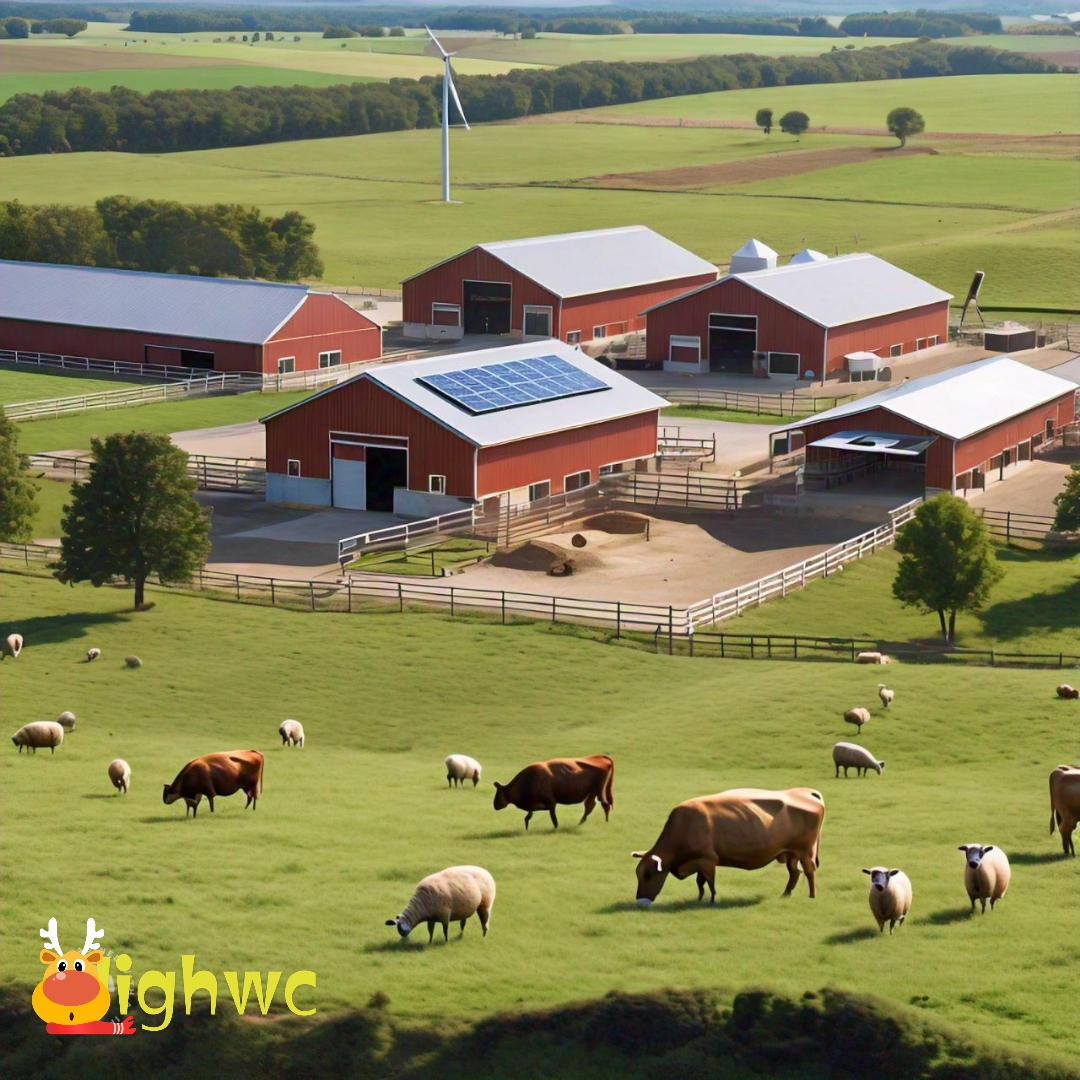Top 7 Sustainable Livestock Farming Practices for Maximum Profitability
- Get link
- X
- Other Apps
Top 7 Sustainable Livestock Farming Practices for Maximum Profitability
Sustainability is becoming an essential component of modern farming, and livestock farmers are no exception. By adopting eco-friendly practices, you can increase profitability, reduce costs, and meet the growing consumer demand for ethically produced animal products. Sustainable livestock farming not only benefits the environment but also enhances the health and productivity of your animals.
In this blog post, we will explore the top 7 sustainable livestock farming practices that can help you maximize profitability while maintaining eco-friendly operations.
1. Pasture-Based Livestock Systems
Pasture-based systems allow animals to graze freely on natural vegetation, which reduces the need for supplemental feed and cuts down on costs. This practice improves the quality of meat, milk, and eggs, as it leads to healthier and happier animals.
Why It’s Profitable:
- Lower feed costs as animals forage for natural food.
- Premium pricing for grass-fed or free-range products in niche markets.
- Improved animal health reduces veterinary costs.
Keywords: pasture-based livestock, sustainable grazing systems, free-range farming, grass-fed livestock
2. Integrated Crop-Livestock Farming
Integrated crop-livestock farming involves rotating crops and animals on the same land. This system allows you to use animal manure as a natural fertilizer, reducing the need for chemical inputs, while crops provide supplemental feed for livestock.
Why It’s Profitable:
- Reduces the cost of synthetic fertilizers.
- Increases land productivity through multi-use.
- Creates a closed-loop system, reducing waste.
Keywords: crop-livestock integration, sustainable farm systems, regenerative agriculture, natural manure fertilization
3. Rotational Grazing
Rotational grazing is a practice where livestock are moved between paddocks to allow grass and soil to recover. This helps prevent overgrazing, reduces soil erosion, and enhances pasture health, leading to more productive grazing areas over time.
Why It’s Profitable:
- Increases pasture longevity and reduces feed costs.
- Better pasture health leads to healthier livestock and higher-quality products.
- Enhances soil fertility, supporting long-term farm productivity.
Keywords: rotational grazing, regenerative grazing, sustainable livestock systems, paddock management
4. Water Management Systems
Sustainable livestock farming requires efficient water management to reduce waste and conserve resources. Implementing rainwater harvesting systems and smart irrigation can minimize water use, ensuring your farm remains productive even in dry seasons.
Why It’s Profitable:
- Reduces water bills and conserves local resources.
- Prevents livestock dehydration and supports better growth rates.
- Improves land resilience during droughts or dry spells.
Keywords: sustainable water systems, rainwater harvesting for livestock, farm water conservation, drought-resilient farming
5. Organic Feed and Forage
Choosing organic feed and forage for livestock can improve the quality of your animal products while reducing the environmental impact of your farm. Organic feed is free from chemicals, antibiotics, and GMOs, resulting in healthier animals and more marketable products.
Why It’s Profitable:
- Attracts consumers willing to pay a premium for organic meat, milk, or eggs.
- Promotes animal health, reducing the need for expensive treatments.
- Enhances farm reputation in eco-conscious markets.
Keywords: organic livestock feed, non-GMO feed for animals, organic forage systems, sustainable animal nutrition
6. Renewable Energy on the Farm
Sustainable livestock farmers are increasingly turning to renewable energy sources such as solar, wind, or biogas to power their operations. These energy sources reduce reliance on fossil fuels and lower long-term energy costs, leading to more eco-friendly and cost-efficient farm management.
Why It’s Profitable:
- Lower energy bills and reduced carbon footprint.
- Government incentives for renewable energy installations.
- Energy independence for off-grid or remote farms.
Keywords: renewable energy for farms, solar-powered livestock farms, biogas systems, sustainable energy solutions
7. Animal Welfare Practices
Sustainability goes hand in hand with animal welfare. Providing adequate space, shelter, and proper nutrition for your livestock is essential to ensure their well-being and productivity. Farmers who prioritize animal welfare often see improved growth rates, better reproduction, and premium product pricing.
Why It’s Profitable:
- Consumers are willing to pay more for ethically produced animal products.
- Healthier animals lead to fewer veterinary bills and higher-quality products.
- Improved farm reputation in the growing market for humane animal treatment.
Keywords: animal welfare in farming, ethical livestock practices, humane animal farming, free-range animal care
Conclusion: Boosting Profits with Sustainable Livestock Farming
By incorporating these sustainable livestock farming practices, farmers can boost their profits while meeting the increasing consumer demand for eco-friendly, ethically produced animal products. Adopting these methods not only supports the environment but also enhances the overall productivity and profitability of your livestock operation.
- Profitable sustainable livestock practices
- Eco-friendly farming techniques
- How to increase farm profits sustainably
- Organic and regenerative livestock farming
- Livestock farming for beginners
- Get link
- X
- Other Apps


Comments
Post a Comment